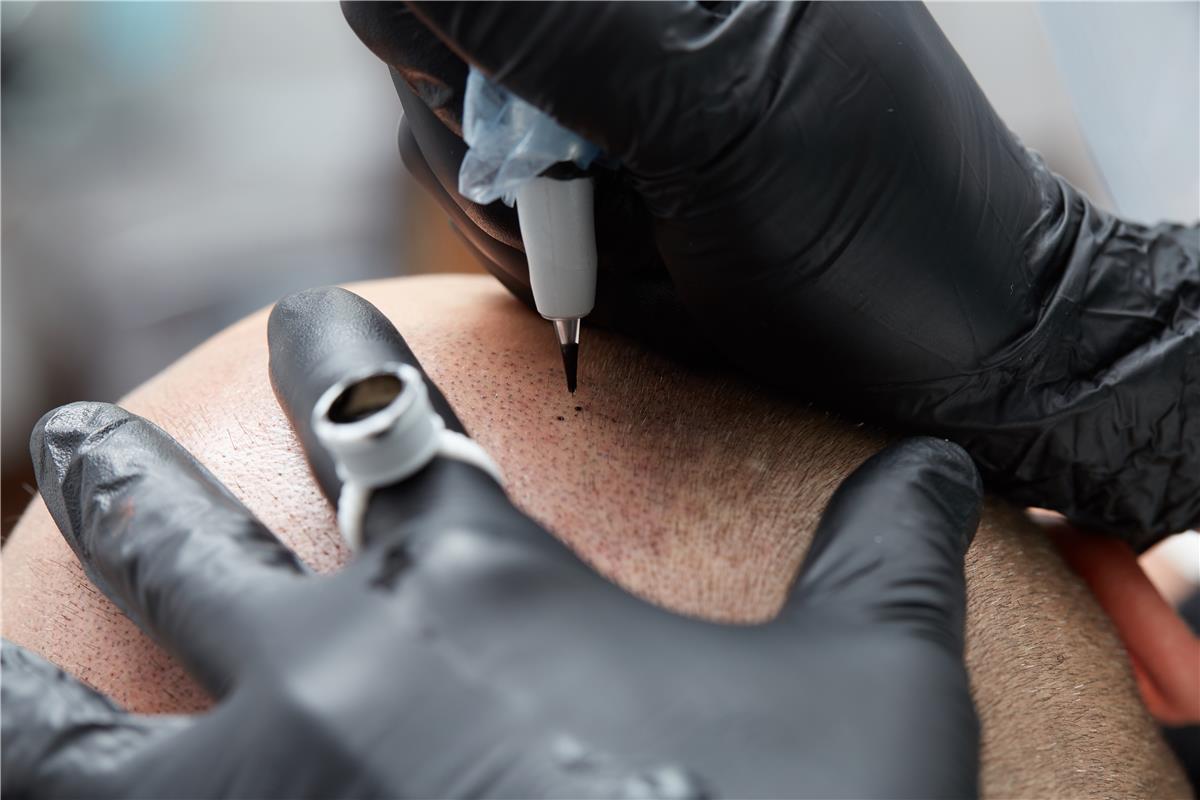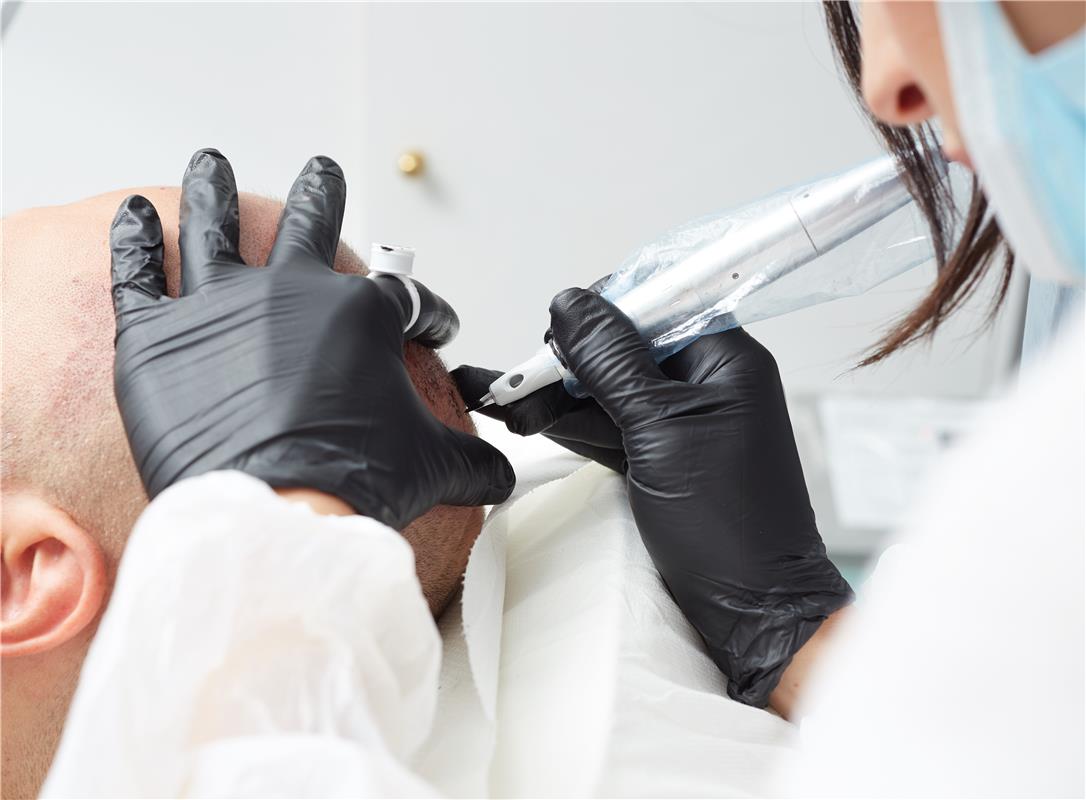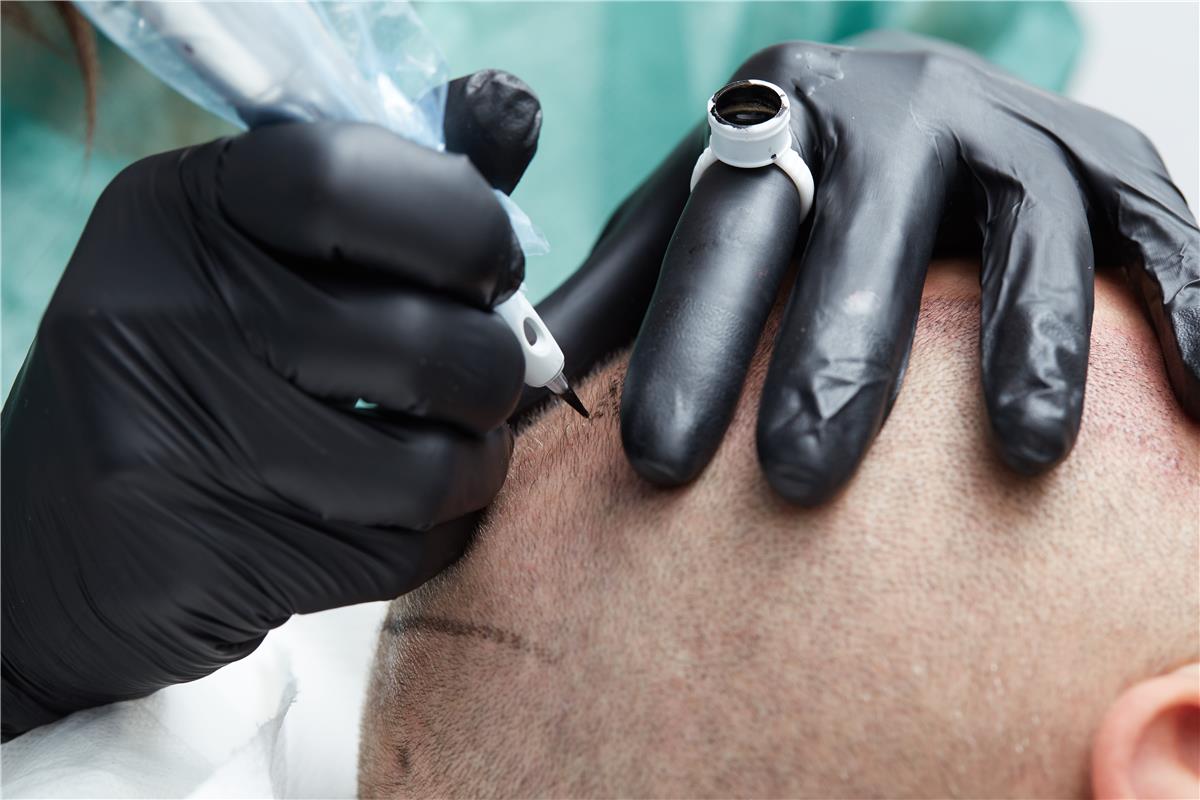Scalp Micropigmentation is a procedure that deploys a stippling pattern tattoo that imitates hair cut close to the scalp know as the buzz cut look. As a reasonably new technique, Scalp Micropigmentation can significantly address the cosmetic issues that arise from the hair loss conditions that both men and women can suffer from.
Male and Female hair loss arises from androgenetic alopecia, or male or female pattern baldness. Distinctly, hair loss typically starts above the temples in men. The receding hairline finally becomes a distinguishing “M” shape; there is also thinning hair on the crown, eventually progressing into baldness. In women, androgenetic alopecia initiates with slow thinning hair at the part line, pursued by widespread hair loss from the crown. That said, women rarely have receding hairlines, and they hardly go bald.
The tattoo industry has undergone a cultural shift since 2008, which made scalp micropigmentation acceptable as a hair loss solution. It’s a procedure like hair tattooing, where your hair tattoo is performed using an electric tattoo device, this is because more power is needed to penetrate the skin on your scalp, your hair tattoo lines need to look natural. The purpose of Scalp pigmentation is to replicate your natural hair while simultaneously strengthening and adding density to the thinning sections.
Cancer - Alopecia - Thinning hair - Male and Female Pattern Baldness
The short answer is, it depends on the client.
Before the procedure, your SMP practitioner will apply a topical numbing agent to your scalp. That said, it’s good to keep in mind that there may still be some discomfort. However, how much discomfort largely depends on your pain tolerance.
People with scalp acne or other skin sensitivity like psoriasis should avoid getting SMP during a breakout or flare-up, as it will be difficult to apply pigment to the inflamed areas.
For example, here are some general guidelines:
1. Tips before treatment
2. Treatment duration
3. Treatment amount
4. Treatment schedule
5. Tips after treatments



After your final treatment, it is essential to:
How long does it last?
Are there any risks involved in this process?
As is the case with most medical procedures, there are risks involved with SMP.
While Scalp Micropigmentation is not technically considered a tattoo, since tattoo ink goes much deeper into the skin and is injected with a thicker needle but treatments like Scalp Micropigmentation and other permanent makeup do carry similar risks. These include allergies to certain components in the pigment and infection associated with the Scalp Micropigmentation ink.
BENEFITS OF SCALP MICROPIGMENTATION:
Your journey to Hair Restoration starts with a No obligation Consultation whether its online or in our Clinic in Dublin, Ireland.
Our highly qualified team will guide you through the options best suited for each individual Clients hair loss needs.